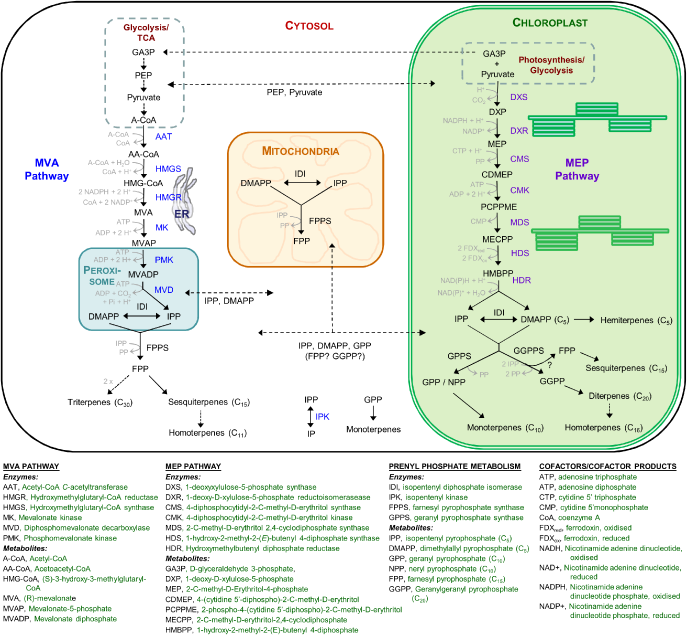Introduction
Metabolite engineering is a common practice in a number of chemical operations and biological processes. With the help of it, people are able to reinvent a wide range of medicinal plants to improve their beneficial functions and decrease other less important factors that consume a tremendous amount of energy. Nowadays, metabolite-engineering professionals engage the technique that uses genetically modified organisms to reach the same goals. The following paper is intended to describe the methodology of metabolite engineering methods that use GMO.
Discussion
To begin with, it is necessary to state that metabolite engineering is the process aimed at optimizing and regulating various biological processes in microcells to stimulate them to generate a certain substance. Usually, workers of chemical laboratories use particular biochemical reactions and ferments that positively influence the work of cells. With the help of such a method, the scientists can successfully convert raw materials into different molecules that maintain the lives of their cells. Recently, analysts found another method of metabolite engineering that implies the usage of genetically modified organisms. The given set of technologies is called genetic engineering or modification in the circles of biology laboratory workers (Turanlı-Yıldız, Hacısalihoğlu, & Çakar, 2017). Its techniques are intended to redesign the entire chains that include multiple cells and calculate a new yield of some products or living creatures.
The System’s Methodology Use
As it is mentioned in the previous paragraph, the technology of metabolite engineering with the help of genetically modified organisms depends on artificial syntheses of certain objects’ DNAs. To create a successful project, it is necessary to invent or find a new form of DNA vector to combine it with the cells of a particular plant and grow a new modification of it in the future. Many processes that can be observed in such operations are similar to various actions required to insert a gene in a foreign cell (Turanlı-Yıldız et al., 2017). It would be proper to mention that the invented DNA can be inserted, regardless of specific algorithms or systematic repetitions. Instead, it might be integrated into a separate part of the genome to reach a specific effect that might be beneficial for the plant in different instances.
The Spheres of Implementation
Almost every person on Earth consumes genetically modified products on a daily basis. It appears that supermarkets, pharmacies, and other retailers sell food or drugs that contain GMO since 1994. Usually, these bacteria positively affect the production speed and gustatory qualities of vegetables, fruit, dairy, and other foods people eat every day. Although the discussed technique is beneficial for farmers and retailers, they are often claimed to have an adverse impact on the human health. Also, the implementation of metabolite engineering with the use of genetically modified organisms can be witnessed in various veterinary practices. The DNA of animals or birds is redesigned to improve their bodies’ weights or other characteristics important for their further consumption by humans.
One Recent Application
As it is mentioned above, the process of metabolite engineering using genetically modified organisms is common in the sphere of medicinal agriculture. The following paragraph is intended to present one recent application of the discussed methodology based on research. There is a wide range of biological scholarly articles on this topic. One of them says that genetic engineering is beneficial for volatile isoprenoids that are present in plants and different bacteria (Vickers, Bongers, Liu, Delatte, & Bouwmeester, 2014). Scientists use this biological technology to prevent insects from destroying a plant’s separate elements. Moreover, it is also implemented as a stress protection, which allows the plant to remain invulnerable to a tremendous number of dangerous microelements present in the atmosphere.

The table explains that all isoprenoids appear to be derived from the same precursors: IPP (isopentenyl diphosphate) and DMAPP (dimethylallyl diphosphate). “These isomers are produced by two unrelated metabolic pathways: the mevalonic acid (MVA) pathway, found in most eukaryotes, archea and some bacteria; and the methylerythritol phosphate (MEP) pathway [a.k.a. non-mevalonate, deoxyxylulose phosphate (DXP or DOXP) or Rohmer pathway], found in plant chloroplasts and in most bacteria” (Turanlı-Yıldız et al., 2017, p. 67).
Conclusion
Metabolite engineering with the use of genetically modified organisms is used in a wide range of industries to change different products’ structures, lifestyles, and cellular chains. Medicinal agriculture remains one of the most developed spheres regarding the discussed methodology. Genetic engineering stimulates the growth of particular plants. However, the amount of vitamins in them lowers, whereas other useless elements may proliferate. The most of GMO products are used in the production of medicaments.
References
Turanlı-Yıldız, B., Hacısalihoğlu, B., & Çakar, Z. P. (2017). Advances in metabolic engineering of saccharomyces cerevisiae for the production of industrially and clinically important chemicals. Old Yeasts – New Questions, 1(1), 67-86. doi:10.5772/intechopen.70327
Vickers, C. E., Bongers, M., Liu, Q., Delatte, T., & Bouwmeester, H. (2014). Metabolic engineering of volatile isoprenoids in plants and microbes. Plant, Cell & Environment, 37(8), 1753-1775. doi:10.1111/pce.12316